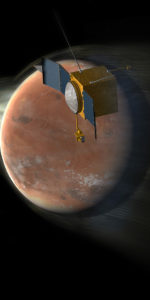
CAPE CANAVERAL, Fla – NASA has always been at the forefront of technology and with interest in greener, cleaner machines all the rage, the space agency is looking to potentially tap a South Carolina-based company to possibly fill this void.
According to a recent article appearing on NASA.gov, Proterra toured one of the firm’s electric buses around the space center recently and the event had those within the space agency as well as some elected officials smiling. The eco-friendly bus toured a small band of KSC, state and local officials on a tour of the center.
The overall impression of the bus, dubbed the “EcoRide,” can be summed up in a single word—quiet.

The bus makes little noise compared to its diesel-fuel burning contemporaries and this was a key point highlighted by Proterra representatives.
“Your first impression will be that it’s not even on, that it’s not even running,” Proterra engineer Joel Torr told the group just before they climbed aboard for the ride. “People aren’t used to this big, quiet, clean bus. It’s very strange compared to what’s out there.”
With gas and maintenance costs on the rise, the vehicle’s selling points were likely not missed by the officials on board. Moreover, given that the bus produces no emissions and that KSC is smack in the middle of the 140,000 acre Merritt Island National Wildlife Refuge, the bus would be an improvement over conventional diesel-fueled buses.

NASA has been working toward using more and more alternatively fueled vehicles for some time. The space agency has increased the use of these as they have been made more available.
This, however, marks the first occasion that an electric bus has been offered to the site where NASA launches most of its missions from. The visit was coordinated by the Space Coast Energy Consortium. General Motors also had representatives on hand.
“We are actively promoting the use of alternative fuel vehicles when possible,” said John Thiers of the center’s Operations directorate.
The bus can be charged up in about 10 minutes and could have a built-in market with the adjacent Kennedy Space Center Visitor Complex so reliant on buses to tour the 1 million-plus guests that visit the site annually. The Visitor Complex had a representative on hand during the tour.
The bus normally needs a recharge after about 30 miles or so, but in the case of the KSC visit that was improved upon some with the bus traversing 30 miles and just using a third of its charge.
NASA currently does not have a bus route, but given the expansive nature of the center, the environmental concerns, and the expected ramp up in activity due to NASA’s commercial and deep space exploration efforts, the space agency may just find itself in need of what the EcoRide has to offer.





One Comment
One Ping
Pingback:United States and North American News | David Reneke | Space and Astronomy News